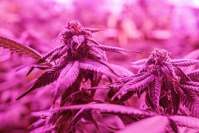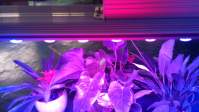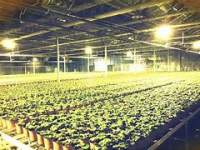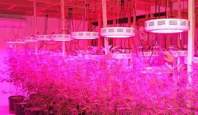The help of led plant lights to plants
Led plant lights must require sunlight in accordance with the law of plant growth, and led plant supplement light is a lamp that uses the principle of sunlight to replace sunlight to provide a better environment for growth and development of plants.
The light environment is one of the indispensable and important physical environmental factors in the growth and development of plants. Through the regulation of light quality, the control of the establishment of plant morphology is an important technology in the field of facility cultivation. According to the light required by plant photosynthesis, we basically make plant lights in three forms: red-blue combination and full blue and full red, covering the wavelength range required for photosynthesis. In terms of visual effects, the plant light with a combination of red and blue appears pink. Red light promotes plant germination and flowering, and blue light can promote plant growth. You can choose a more suitable wavelength and color ratio to promote plant growth. The chromatographic ratio of the red and blue lights is generally between 5:1 and 10:1, and the ratio of 7 to 8:1 is usually optional. Of course, it is the best condition to adjust the ratio of red and blue light according to the plant growth cycle.
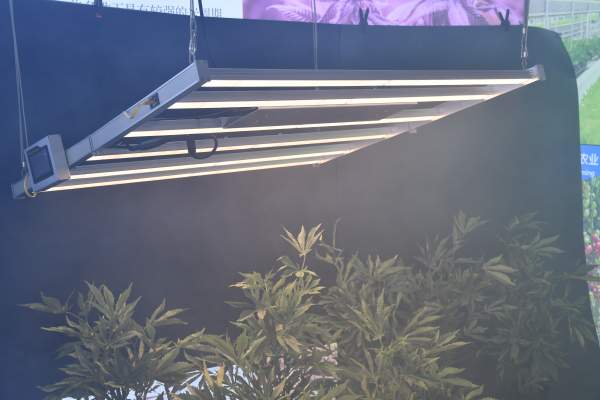
LED plant lights have the following advantages:
1. The wavelength types are very rich, which coincides with the spectral range of plant photosynthesis and light morphology;
2. The half-width of the spectral wave is narrow, and pure monochromatic light and composite spectrum can be obtained by combining according to needs;
3. It can concentrate light of specific wavelength and irradiate crops evenly;
4. Not only can regulate the flowering and fruiting of crops, but also can control the height of the plant and the nutrient composition of the plant;
5. The system generates little heat and occupies a small space. It can be used in a multi-layer cultivation three-dimensional phase combination system to achieve low heat load and miniaturization of production space; high light efficiency: 90% of the emitted light can be absorbed by plants, while traditional high pressure Nano lamps and metal halide lamps have only 8-10% luminous efficiency; the luminous decay is very small, and the life span is as high as 50,000 hours; the extremely strong durability also reduces the operating cost.
1. Solar spectrum:
The solar spectrum is a continuous spectrum, in which the blue and green spectrum are stronger than the red spectrum, and the visible light spectrum ranges from 380 to 780 nm. The growth of plants in nature is related to the intensity of the spectrum. For example, most plants in the area near the equator grow very fast and grow longer. However, the higher the sun's intensity, the better, and there is a certain degree of selectivity for the growth of animals and plants. Several key auxins that affect plant growth have obvious differences in light absorption spectra. The application of led plant growth lights is not a simple matter, but very targeted. Here it is necessary to introduce the concept of the two most important photosynthesis led plant growth lamps on plant growth elements.
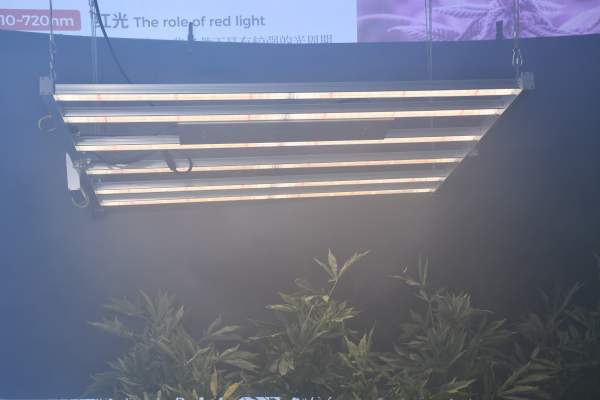
2. Chlorophyll
Chlorophyll is one of the most important pigments related to photosynthesis. It exists in all organisms capable of building photosynthesis, including green plants and prokaryotic blue-green algae (cyanobacteria) and eukaryotic algae. Chlorophyll absorbs energy from light, and then the energy is used to convert carbon dioxide into carbohydrates. Chlorophyll a mainly absorbs red light, and chlorophyll b mainly absorbs blue-violet light, mainly to distinguish shade plants from sun plants. The ratio of chlorophyll b to chlorophyll a of shade plants is very small, so shade plants can use blue light strongly and adapt to growing in shade. Chlorophyll a is blue-green, and chlorophyll b is yellow-green. There are two strong absorptions of chlorophyll a and chlorophyll b, one in the red region with a wavelength of 630~680 nm, and the other in the blue-violet region with a wavelength of 400~460 nm.
3. Carotenoids
Carotenoids (carotenoids) are a general term for a class of important natural pigments, which are commonly found in yellow, orange-red or red pigments in animals, higher plants, fungi, and algae. So far, more than 600 natural carotenoids have been discovered. The light absorption range of carotenoids is OD303~505 nm. It provides the color of food and affects the human body's intake of food; in algae, plants and microorganisms, its color is covered by chlorophyll and cannot be presented. In plant cells, the carotenoids produced not only absorb and transfer energy to help photosynthesis, but also have the function of protecting cells from being destroyed by excited single-electron bond oxygen molecules.
The spectrum required for plant growth should be a continuous spectrum with a certain distribution width. It is obviously inappropriate to use a light source made of red and blue chips with a very narrow spectrum (as shown in Figure 3(a)). In experiments, it was found that plants tend to be yellowish, the leaf stems are very light, and the leaf stems are very thin. The spectrum required for plant growth should be a continuous spectrum with a certain distribution width. It is obviously inappropriate to use a light source made of red and blue chips with a very narrow spectrum (as shown in Figure 3(a)). In experiments, it was found that plants tend to be yellowish, the leaf stems are very light, and the leaf stems are very thin.
Visible light blue-violet light and cyan light have a great effect on plant growth and the formation of young shoots. This kind of light energy has always been the elongation of plants to form a short and thick form; at the same time, blue-violet light can also dominate cell differentiation. Important light; blue-violet light can also affect the phototropism of plants. Ultraviolet rays inhibit the formation of certain growth hormones in plants, thereby inhibiting the elongation of stems; ultraviolet rays can also cause phototropic sensitivity, and can promote the same as blue, violet and cyan light in visible light. The formation of anthocyanins. Both the red light in visible light and the infrared light in invisible light can promote the germination of seeds or spores and the elongation of stems. The red light in the led plant light can also promote the decomposition of carbon dioxide and the formation of chlorophyll.
The effect of the spectrum of led plant growth lights on the photosynthesis of plants The light that has a greater impact on plants is mainly divided into three categories. Ultraviolet and visible light and infrared light. Let's analyze these three types of light in detail below.
The first band of radiant light: it is ultraviolet light that contains a lot of energy, but part of the ultraviolet light is absorbed by the ozone layer. Therefore, we are more concerned about the parts that are closely related to agricultural film: ultraviolet-b (wavelength 2 is between 80-320nm) and ultraviolet-a (wavelength is between 320-380nm), these two wavelengths of ultraviolet light have their differences. The same effect is: coloring the flowers of plants.
The second band of radiant light: it is visible light (wavelength is 400-700nm), which is equivalent to blue light, green light, yellow light and red light, also known as PAR, which is the active area of photosynthesis. It is the most important part of visible light used by plants for photosynthesis. Blue and red light are the most important parts in the PAR band, because riboflavin in plants can effectively absorb this part of light, while green light is not easily absorbed.
The third band of radiation: infrared, which can be divided into near-infrared and far-infrared. Near-infrared light (wavelength is 780-3,000nm) basically has no effect on plants, it only produces heat. The far infrared has a wavelength of 3000-50,000nm, and this part of the radiation does not come directly from sunlight. It is a kind of radiation produced by molecules with thermal energy, which is easily lost at night.
Plants are most sensitive to the red light spectrum, not very sensitive to green light, and the most sensitive area to the spectrum is 400~700nm. This section of the spectrum is usually called the region of effective energy for photosynthesis. About 45% of the energy of sunlight lies in this section of the spectrum. Therefore, if artificial light sources are used to supplement the amount of light, the spectral distribution of the light source should also be close to this range. When we know the distribution of the effect of spectral wavelength on photosynthesis, we can get an accurate indicator of photosynthetically active radiation (PAR) through a spectral radiometer. The led plant growth light source can already be configured as a high-efficiency plant light source according to the effective spectrum of photosynthesis. The led plant growth light must require sunlight according to the law of plant growth, and the led plant growth light uses the principle of sunlight. The light of the plant growth lamp replaces the sunlight to provide a better growth environment for plants.


